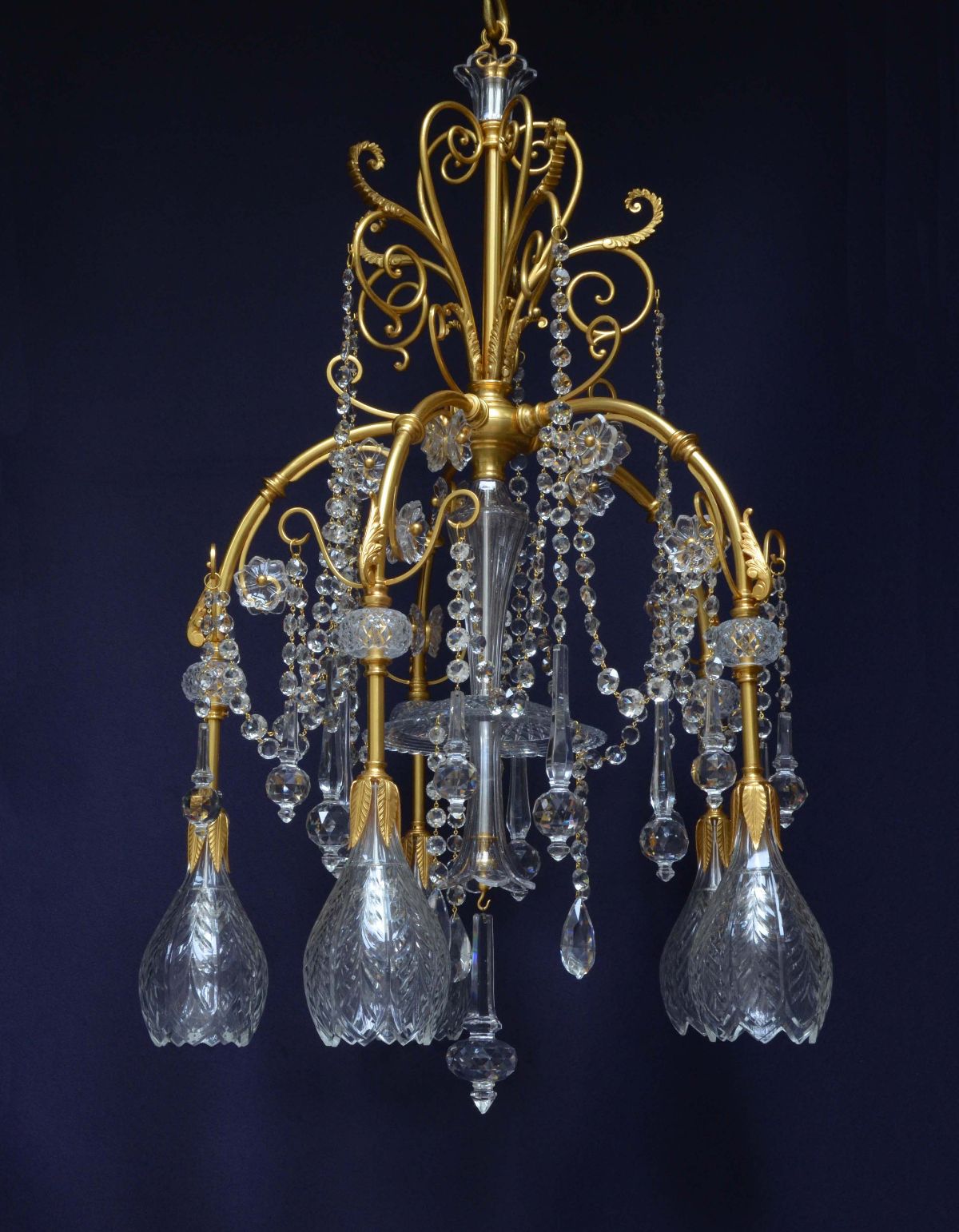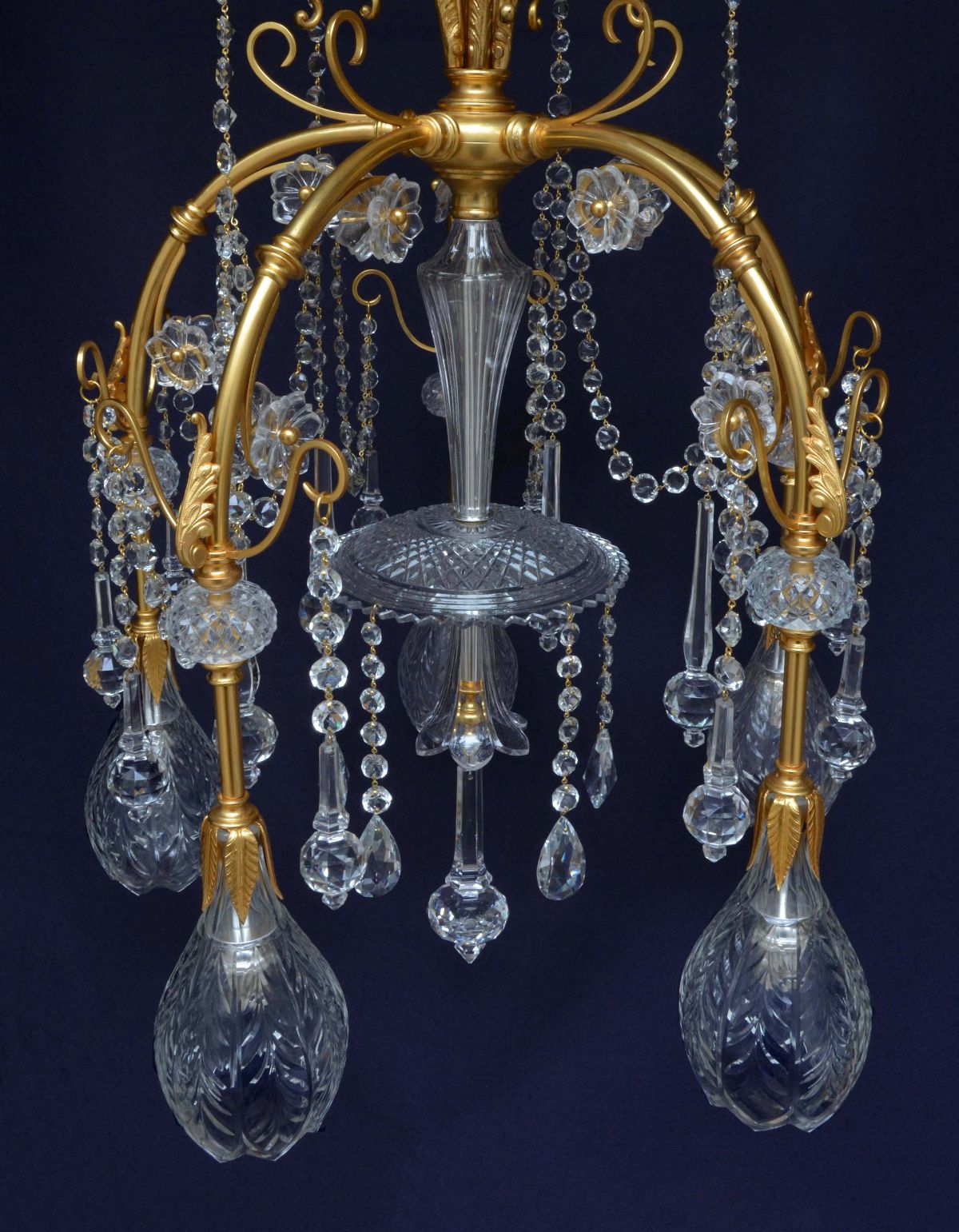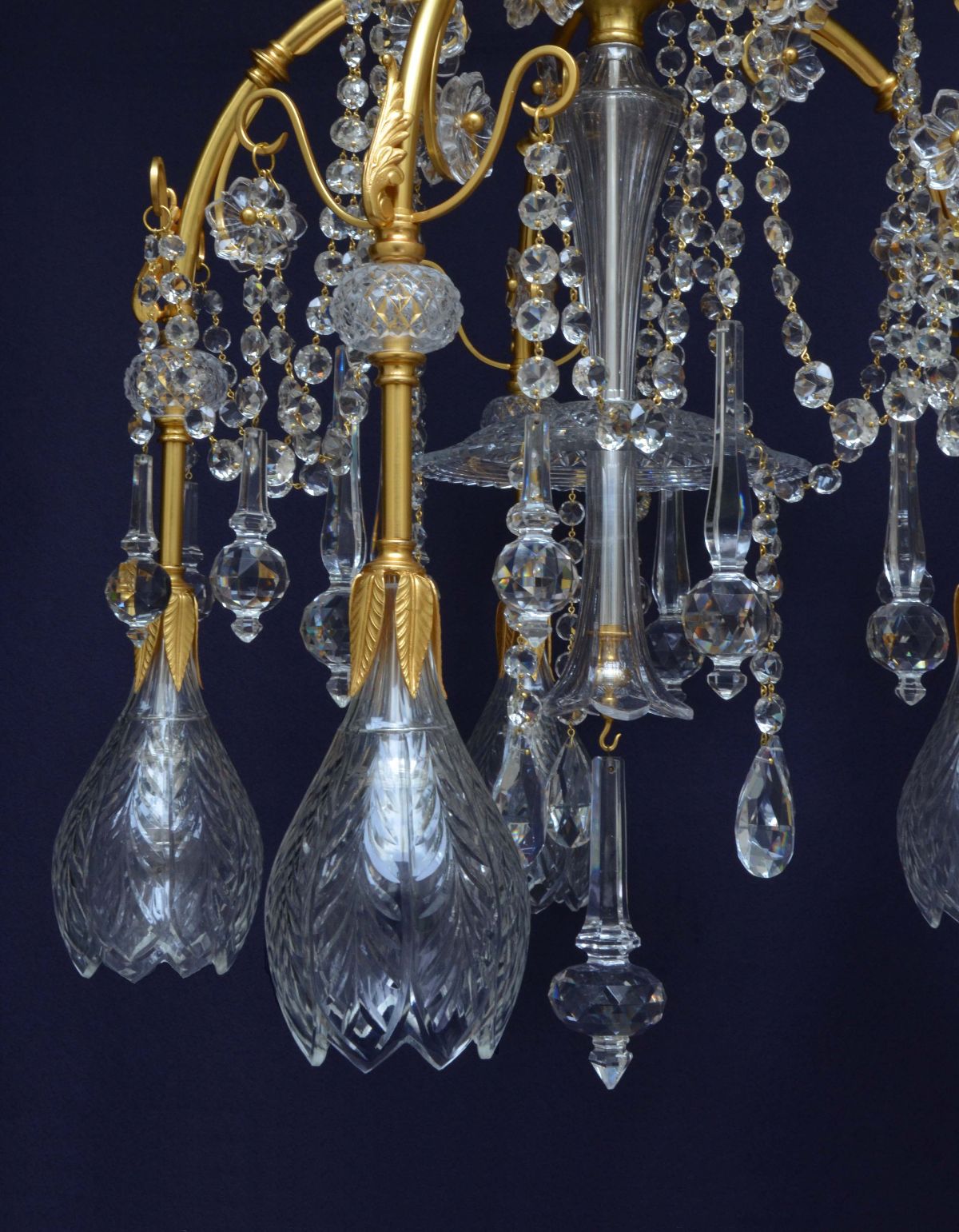Gilt-bronze and cut-glass five light Osler Chandelier
test
Gilt-bronze and cut-glass five light Osler Chandelier
5766
Gilt-bronze and cut-glass five light Osler Chandelier:
the top scrolling crown with fern fronds; with five
tulip-shaped shades on outer leafy curving branches;
dressed with graduated festoons of ‘single-star’ prisms
and pendants called ‘pedalogues’ peculiar to Osler.
Made in Birmingham, circa 1910, in the early electric
period, restored and rewired.
| Height: | 38" | - | 96.5cm |
| Width: | 21" | - | 53.5cm |
Glossary Words
gilded, gilt
A very thin layer of gold applied to brass or bronze.
cut glass
Often now referred to as 'crystal', the glass was blown and shaped, then passed to a specialist cutter, who would polish and cut patterns to enhance its brilliance.
Osler & Co. (F & C)
Founded in Birmingham, England, in 1807, F & C Osler produced some of the most magnificent and imaginative items ever to come from a glass manufacturer. Thomas Osler, his sons, Follett and Clarkson, and after 1831, his nephew Abraham, were known for their exquisitely cut glass, often combined with fine gilded-metal mounts and framework, produced by their own craftsmen. From about 1840, they had established good contacts with the Middle East and had a gallery in Calcutta, India. Osler made an extravagant cut glass fountain for the centre of The Great Exhibition in 1851. They continued making chandeliers of the highest quality until well into the 20th century. In 1924, they took over the well-known lighting manufacturer Faraday Ltd. and went on producing light fittings until the 1970s.
festoon
A hanging garland of prisms or flowers.
'single star' prisms
Round cut-glass prism, with flat front and star-cut back. Used on early 19th century Regency chandeliers. Later used extensively by Osler for their drapery in the late 19th century.
'pedalogue'
A cut glass pendant designed by Osler, from 1880 onwards.





